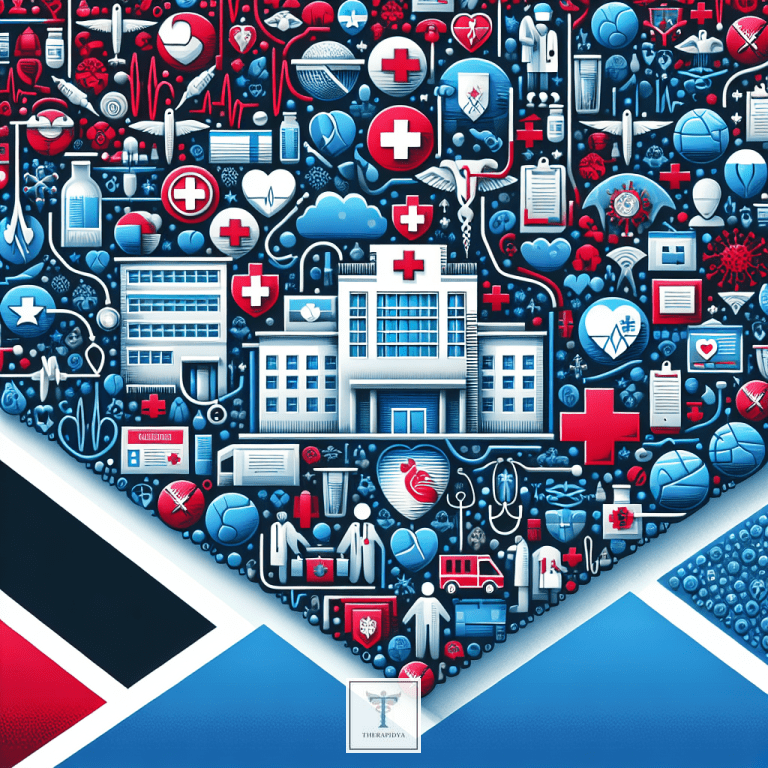Healthcare System in Kenya | Medical Infrastructure | Public Health Policies | Full Guide 2024
The Healthcare System in Kenya: A Beacon of Hope Amidst Challenges
The healthcare system in Kenya has been a journey of transformation filled with inspiring stories of resilience and unwavering commitment to public health. This east African nation, known for its rich culture and diverse landscapes, has been striving to provide equitable healthcare to all its citizens. The quest is ongoing, with milestones marked by the establishment of robust medical infrastructure, implementation of comprehensive public health policies, and a relentless drive to overcome systemic and regional challenges. Herein lies the story of Kenya’s healthcare system, as it stands in the year 2024, a tale of hopes and hurdles, advancements, and the need for continual progress.
Medical Infrastructure: Building the Backbone of Health Services
Kenya’s medical infrastructure is the cornerstone of its healthcare system, laying the groundwork for deliverable health services to its population. Over the years, there has been a notable increase in the number of healthcare facilities, ranging from community health centers, known locally as “dispensaries”, to sophisticated referral hospitals offering specialized care. Additionally, the Kenyan government has worked towards the “Equipment Leasing Scheme” aimed at equipping these facilities with state-of-the-art medical technologies. This initiative has helped revolutionize diagnostics and treatment, enabling a leap forward in medical care standards.
- Dispensary Services: Bringing healthcare to the grassroots level, dispensary services are the first line of medical assistance for many Kenyans. They offer basic outpatient care, antenatal services, and immunizations among other services.
- Referral Hospitals: Kenyatta National Hospital and Moi Teaching and Referral Hospital are flag-bearers of high-level medical care. These centers of excellence not only provide specialized services but also contribute to medical research and training.
Public Health Policies: Navigating the Tides of Change
Public health policies in Kenya are the rudders steering the nation towards improved healthcare outcomes. The government has instituted a number of policies and initiatives like the “Linda Mama”, “Beyond Zero” campaigns, and the rollout of Universal Health Coverage (UHC), which is part of the Big Four Agenda. UHC is a particularly bold initiative that embodies the aspiration for all Kenyans to access quality health services without suffering financial hardship.
- Linda Mama Program: A government-sponsored health program that ensures pregnant women and infants have access to free maternal services.
- Beyond Zero Campaign: An initiative championed by Kenya’s First Lady, it focuses on reducing maternal and child mortality rates, as well as tackling HIV/AIDS and other public health issues.
- Universal Health Coverage: A flagship program aiming to make health insurance available to all Kenyans, reducing the out-of-pocket expenses that can lead to poverty.
Unveiling the 2024 Landscape of Kenya’s Healthcare Policy
The year 2024 marks a decisive year for Kenya’s healthcare, with policies being evaluated for their effectiveness and adaptability. Strides have been made in increasing manpower within the health sector, with intensified training of medical staff and personnel to address the shortfall in the provider-to-patient ratio. The Health Act of 2017 mandated the formation of the Health Human Resource Advisory Council, providing guidelines to enhance the capacity of healthcare workers.
Confronting Healthcare System Challenges with Resolve
Despite impressive strides, Kenya’s healthcare system continues to face significant challenges. Geographical disparities in health service access persist, with rural areas suffering from a scarcity of healthcare facilities and trained personnel. Urban areas, on the other hand, are better served but often grapple with overcrowded public hospitals and expensive private healthcare options.
- Rural-Urban Divide: The stark contrast between healthcare accessibility in rural versus urban settings continues to be a barrier to equitable healthcare in Kenya.
- Financial Constraints: Budgetary limitations constrain the government’s capacity to adequately fund healthcare services, leading to reliance on external donor funding and philanthropic initiatives.
Technological Integration: Digitizing Health for Efficiency
Leapfrogging into the digital era, Kenya has embraced technology to bolster its healthcare system. Innovations such as mobile health (mHealth), telemedicine, and electronic health records are transforming the landscape, bridging gaps in communication between healthcare providers and patients. The government’s support for Health Information Systems (HIS) and the digitization of patient records has greatly enhanced data management and service delivery.
Future Endeavors: Towards a Healthier Kenya
Looking ahead, the journey towards a healthier Kenya is a collaborative effort involving the government, private sector, international partners, and the Kenyan people. Continuous investment in healthcare education, vigilant surveillance of emerging diseases, and enhancing the efficiency of health services are pivotal elements shaping the future of public health in Kenya.
- Healthcare Education: By prioritizing education, especially in rural areas, Kenya aims to increase health literacy and self-care practices among its citizens.
- Disease Surveillance: The government is committed to strengthening disease surveillance systems to mitigate risks and efficiently respond to health crises.
- Service Efficiency: Ensuring the availability of medical supplies, shortening wait times at hospitals, and enhancing patient care are key areas of focus to improve service delivery.
In conclusion, as we navigate the ebbs and flows of Kenya’s healthcare narrative, it is clear that tenacity, innovation, and policy-driven action are the hallmark of its journey. The full guide to Kenya’s healthcare system in 2024 not only tells a story of present circumstance but echoes a vision of what is needed for a brighter, healthier future.







